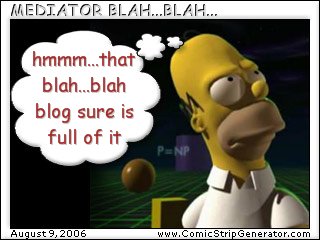Heuristic Theory
 In a previous entry I broke the sacred blog contract that all bloggers enter into by their early posts - you know, when the future tone and direction is set for the blog - and for that I apologise.
In a previous entry I broke the sacred blog contract that all bloggers enter into by their early posts - you know, when the future tone and direction is set for the blog - and for that I apologise.
...in my very first post I promised to leave lofty mediation theory to better equipped others and bring you only dispatches from the coalface of conflict.
But in a recent post I couldn't resist commenting on the impact of Multiple Equivalent Simultaneous Offers theory.
Now for my second breach, I mention in passing the need to understand common heuristic theory such as - anchoring and adjustment, availability, self-serving evaluations, framing, status quo bias, contrast effects, and reactive devaluation.
In particular, contrast effects is interesting as a 'persuasion tool' and appears useful, especially if you are the kind of trigger happy mediator who puts forward mediator proposals at the drop of a hat (shame on you!).
An example of contrast effects might be:
A mediator proposal (or party offer) of $100,000 paid in -
1. two tranches on anniversery of settlement - $50,000 per year for two years, or
2. a lump sum today but NPV'ed (net present valued) over 2 years, or
3. monthly installments over 3 years starting next month
Research shows the receipient will likely take each of the options offered to them then compare it to the other payment options rather than comparing the $100,000 to their wish figure and wanting more.
This research has developed several interesting ways of using our knowledge of biases to influence party thinking....
But where's the line for us mediators on this stuff?





No comments:
Post a Comment